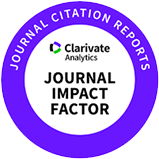Effects of illite or bentonite on cytotoxicity, antibacterial and adsorption capacity in porcine intestinal epithelial cells
Abstract
This study investigated the cytotoxicity of illite and bentonite using porcine intestinal epithelial cells (IPEC-J2) as a primary screening verification method for the effect of supplementing illite and bentonite. Also, it evaluated the antibacterial activity and adsorption capacity of illite and bentonite by infecting IPEC-J2 cells with pathogenic <italic>Escherichia coli</italic>. The addition levels of illite and bentonite in IPEC-J2 cells medium were set as follows; CON, 0%; I1, illite 1%, I1.5, illite 1.5%; I2, illite 2%; B1, bentonite 1%; B1.5, bentonite 1.5%; B2, bentonite 2%. The treatment time of illite and bentonite on IPEC-J2 cells was set to 2 hours, 4 hours, and 6 hours. Cytotoxicity and wound healing assays were analyzed without <italic>E. coli</italic> challenge. Cell viability and <italic>E. coli</italic> adhesion ability were assessed through illite or bentonite treatment with <italic>E. coli</italic> challenge. All experiments were performed with three independent replicates, with six technical replicates per experiment. The B1.5 and B2 treatment groups showed higher (TRT, <italic>p</italic> < 0.05) cytotoxicity than the CON and illite groups. There was no significant difference in cytotoxicity according to the illite and bentonite treatment time. For the ratio of the healing rate, when illite and bentonite were treated for 6 hours, a significantly higher (Time, <italic>p</italic> < 0.05) healing rate was shown than that of the 2 and 4-hour treatments. The B1 with <italic>E. coli</italic> challenge group showed a significantly higher (TRT, <italic>p</italic> < 0.05) live cell count than the non-supplementation with <italic>E. coli</italic> challenge and B2 with <italic>E. coli</italic> challenge groups. In conclusion, except for 1.5% and 2% addition levels of bentonite, the illite and bentonites did not induce cytotoxicity in IPEC-J2 cells regardless of the treatment time. They were thought to be effective in wound healing ability in IPEC-J2 cells.
















